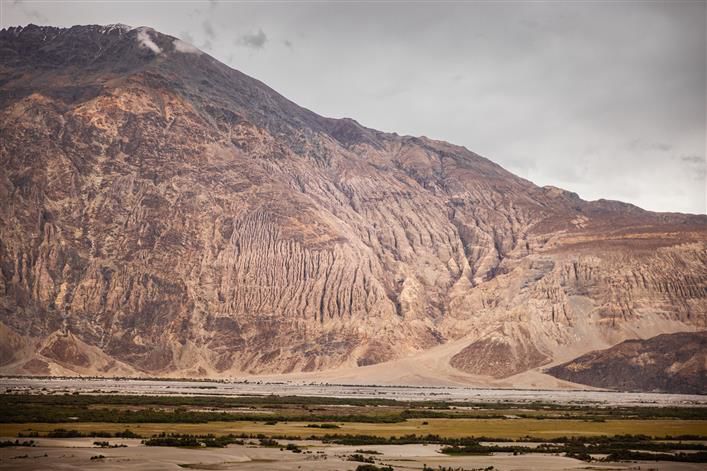Fossil remains found in Ladakh can help space missions find extra-terrestrial life: Study
Vijay Mohan
Chandigarh, July 24
Fossil remains of magnetic particles produced by bacteria, known as Magnetofossils, have been spotted in rock varnish layers in Ladakh which can provide valuable insights for planning future space missions aimed at identifying habitable environments in space, according to a study undertaken by Indian scientists.
The study suggesting biotic processes in the formation of rock varnish indicates how life can exist in extreme environments, which also provides valuable insights for astrobiology.
Ladakh, known as the “cold desert of India”, experiences extreme climatic conditions such as high ultraviolet radiation, significant temperature variations, and limited water availability, making it a suitable terrestrial analogue for Martian studies.
Researchers from the Birbal Sahni Institute of Palaeosciences, were inspired by the similarity between the rock varnish observed in Ladakh and that seen on Mars, particularly during the Perseverance rover operations.
Rock varnish is a thin dark-coloured natural feature rich in manganese, iron and clay minerals that forms on rock surfaces and subsurface rock fractures in extremely dry and cold environments. It is believed to provide nutritional support to micro-organisms.
They collected samples of rock varnish from the Ladakh region, chosen and employed XPS to analyse the surface chemistry of the rock varnish. The analysis conducted at the Sophisticated Analytical Instrumentation Facility established by the Department of Science and Technology, helped identify the nanochains of magnetofossils.
Additionally, higher concentrations of oxidised manganese and carboxylic acid functionality on the varnish surface were identified, indicating organic signatures, according to a statement issued by the Ministry of Science and Technology on Wednesday.
The study, published in Planetary and Space Science, showed that rock varnish from Ladakh, a potential Martian analogue site, contains enriched concentrations of magnetic minerals likely derived from biotic sources.
By identifying biotic signatures in rock varnish, scientists can better target potential biosignatures on Mars and other planetary bodies, aiding the search for extraterrestrial life. This information is crucial for planning future space missions by ISRO and other space agencies, including Mars exploration, where identifying habitable environments is a primary goal, the statement added.









